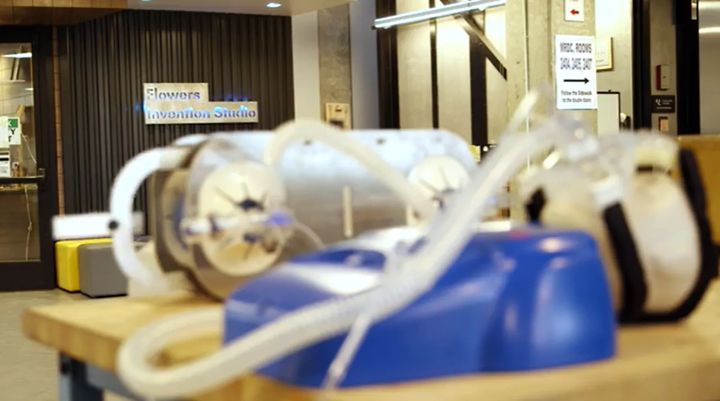
Since late March, a team of Georgia Institute of Technology (Georgia Tech) researchers have been providing recommendations for readily available materials to use as filters in homemade face masks.
The “Rapid Response” team, which includes Georgia Tech faculty, research staff and students, is providing advice that includes its understanding of the chemical and mechanical properties of filter materials as well as results of tests conducted on advanced aerosol chemistry equipment from a climate change lab. Other Georgia Tech teams are working to write directions and files for 3D printers to help commercial manufacturers create emergency ventilators, plastic surgical shields, and gowns.
All the Georgia Tech teams working on health care-related items are incorporating suggestions and feedback from doctors and supply chain managers at Atlanta area hospitals, including Children’s Healthcare of Atlanta, the Emory Healthcare Network, Piedmont Healthcare, and Kaiser Permanente.
Ryan Lively, a member of the Rapid Response team and an associate professor of chemical and biomolecular engineering at Georgia Tech, said the face masks are intended for non-health care workers in everyday environments like city streets.
Lively said one of the best materials to use as a filter in a homemade 3D-printed mask is a high-performance particulate air (HEPA) furnace filter that is certified to not contain fiberglass. This type of filter works best when placed between two blocking layers of nonwoven fabric.
“Avoid fiberglass HEPA filters, as they can cause acute respiratory issues,” said Lively.
Lively said a good choice for the outer shell of a homemade mask is a square piece of fabric from a reusable polypropylene grocery bag that lacks a shiny film. Polypropylene, which is the material used in plastic drinking straws, blocks droplets in exhaled air that could contain the virus responsible for COVID-19.
“A DIY mask helps reduce the quantity of the virus released by the wearer. Larger droplets have the potential to contain more virus particles. You want your mask to block as many of these as possible,” said Mark Losego, a member of the Rapid Response team and an assistant professor of materials science and engineering at Georgia Tech.
Losego said DIY mask makers can test their creations by spraying through the mask with a water spray bottle.
“The water simulates the droplets in a sneeze or cough. Not all fabrics impede water equally. In some fabrics, a lot of water goes through. Those are ones to avoid,” said Losego.
Why Aerosol Instrumentation Is Needed
Georgia Tech is able to run lab tests on these materials because it has advanced aerosol instrumentation, including the Scanning Mobility Particle Sizer (SMPS). The professor using this and other equipment to better understand aerosols is Nga Lee (Sally) Ng, an associate professor who holds a joint appointment in chemical and biomolecular engineering and earth and atmospheric sciences at Georgia Tech.
Ng is currently performing tests with the help of two Georgia Tech doctoral students, Taekyu Joo and Masayuki Takeuchi. The three team members are engaging in tests at a safe distance from one another to ensure their safety.
Aerosols are materials like bacteria and bits of carbon that float in the air. Prior to the pandemic, Ng’s work focused on understanding how the amount of aerosols in the air that is released by trees in the southeastern U.S. is controlled by human-caused emissions of other compounds like sulfur dioxide. Sulfur dioxide is primarily emitted from fossil fuel combustion at power plants.
Read more at ENGINEERING.com
